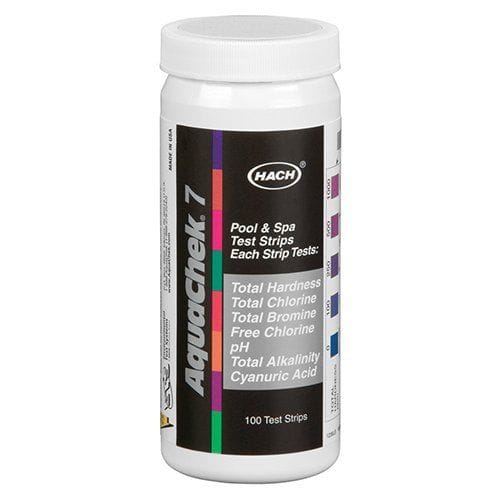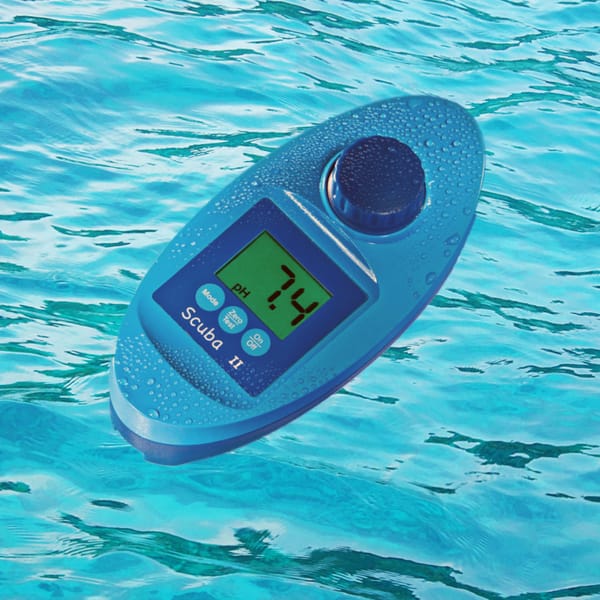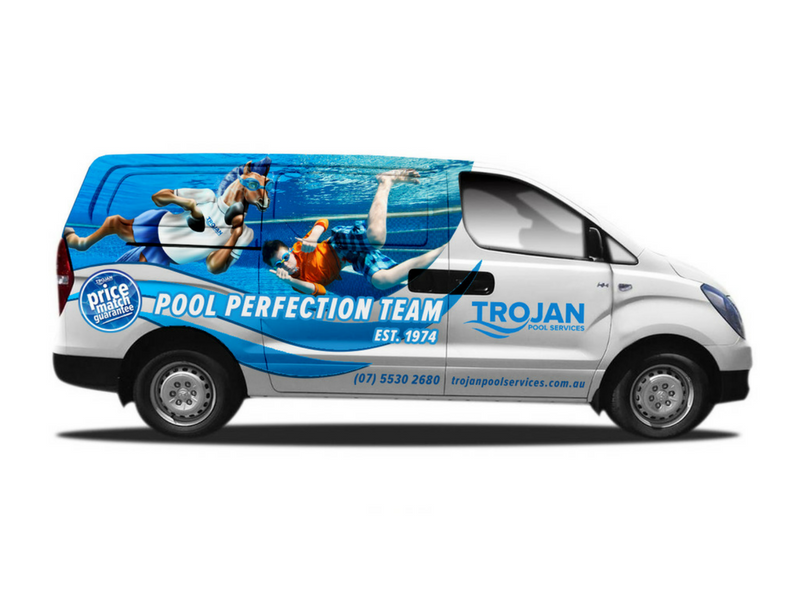How To Test Pool Water Accurately
To keep your pool crystal clear and swimmable all year round, it takes a combination of chemicals to sanitise the water, another to balance it out and others to keep algae from forming.
To understand the state of your pool water, it’s important to perform periodic water testing.
In this article, i’ll go over the steps and provide some tips for how to test pool water accurately.
It’s important to learn how to test your pool water, and do it at least once a week to ensure the pH and alkalinity are balanced, and to keep your chlorine at optimum levels.
In addition to weekly testing, I recommend you get a professional to take a sample and test every six weeks at minimum to ensure the correct water treatment is maintained.
Can You Swim In A Pool With High pH?
Your pH level is important, because it lets you determine how alkaline or acidic the water in your pool is.
If the pH is outside of the range of 7.0 to 7.6, the chlorine cannot sanitise the water properly and kill any algae growth.
High pH
High pH readings are considered alkaline, and it can cause problems with your health as well as the pool.
A high pH reading above 7.8 may increase the chances of cloudiness in the water and scaling along the sides of your pool.
Chlorine and other sanitising agents will not work effectively when the ph is above recommended levels, meaning dangerous bacteria entering your water might not be effectively dissolved.
At times of high pH, the water may seem clear and you may not notice a difference in the water while you’re swimming, but any present bacteria could be harmful to your health.
If the water exceeds a level of 7.6 it enters a condition of water scaling, and you’ll need to add acid.
Low pH
Low pH readings, lower than 7.0, can cause skin irritation and your eyes may burn or become red when opened under water..
Like high pH, chlorine and other sanitisers aren’t as effective when the pH is low, thus increasing the chances for dangerous bacteria to remain.
Low pH can also hurt your pool, causing metal steps and /or surrounds to corrode and vinyl linings to distort.
If the water falls below a 7.0, it’s in an acidic state and pH “Increaser” or sodium carbonate needs to be added to raise the pH
What do you use to test pool water?
To test the PH level and chlorine in your pool, there are three main options i recommend.
- Test Strips
- Digital Meters
- Professional Service
Test Strips
For most cases of DIY home testing, this is a convenient solution. It’s easy to do and very accurate – far more accurate than liquid test kits as human error could be encountered.
With a liquid test kit, it’s hard to see the low end of the colours.
Test strips are used by professionals, and products like Aquachek Silver offers seven important tests on a single strip.
It offers enhanced colours for greater distinction and easier readability.
How to read pool test strips?
Simply take your water sample and quickly drip one, dry strip into the water. Hold it still in the air for about 15 seconds (do not shake off the excess water).
Then after, match up the colours of the strip to the back of the bottle or accompanying booklet to get your readings.


Digital Test Kits
For the ultimate in pool water accuracy, take a look at the various digital meters available.
Digital meters eliminate the need to visually determine slight colour variations, compare or use look-up tables, thus taking the guesswork out of your pool water testing..
Digital meters give highly accurate results and are very simple to use.
An internal photometer measures the water sample and provides you with the required steps or chemicals to add to the pool.
Some devices keep a log of each reading for tracking purposes.
Professional Service
Trojan Pool Services offers onsite pool testing, chemical additions and maintenance advice for all residential and commercial pools.

Tips to accurately test pH and chlorine in pool water.
- Take Water Samples Away from Pump Return Jets / Outlets
Higher concentration of chemicals may be found here, especially if you added chemicals via your skimmer box. This is the same case if you have a salt-water chlorinator system.
Take a water sample in a position away from return jets. Entrance steps are usually a good spot. - Take Water Samples at least 30cm In Depth
If you take a sample from the surface of the water, you’ll get inaccuracies caused by direct sunlight and evaporation.
Chemicals also tend to have a higher concentration near the top when pool covers are used. - Make Sure Your Test Strip Kit Is Fresh & In Date
The test strips don’t stay fresh for long. Most only last 12 months, sometimes less. If your test kit isn’t within the used by date, or is more than 1 year old, then it’s good practise to replace the kit with a new one. - Don’t Touch Test Strips or the Water Sample
Touching the end of the test strips or the water sample could change the readings. Don’t shake the strip or wipe off excess water. Your hands have residual chemicals (think soaps, food etc) on them and could affect the results. - Don’t Wait Too Long to Take the Reading
Always follow the strip test kit instructions here. Not waiting long enough for the sample to change colour will give you an inaccurate reading. - Run your Pump for 15-30 mins Before Testing
Running the pump & filtration system will ensure your getting accurate results of the water and chemical balance in your pool.
How long should you wait to test pool water after adding chemicals
I’d wait at least 3 days. Some chemicals dissolves very slowly in your filtration system. If you retest for it too soon, it may have not all dissolved and you think you need more.
You could end up with too high of a reading which would result in using excessive amounts of chemicals for no real reason.
Frustrated by continually testing, adding chemicals and trying to keep your pool clear all the time?
We cut out all the fluff and confusion of pool maintenance and provide Gold Coast residents with pool servicing and advice
Using our computerised water testing equipment, we’ll give you a fast, accurate diagnosis about the condition of your pool water and prescribe exactly what your pool needs to keep it in great condition.

